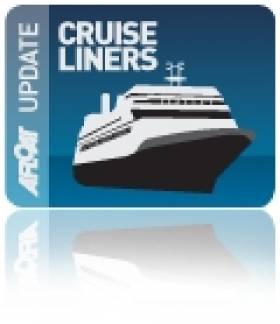Displaying items by tag: Quantum Class
New Royal Caribbean Cruise Ship ‘Anthem’ to Homeport in Southampton
#UKanthem - Royal Caribbean International (RCI) will base its newest 'Quantum' class 158,000 tons ship Anthem of the Seas in Southampton from April 2015 according to CruiseCritic which predicted back in September.
The 4,180-passenger ship which is being built in the Meyer Werft shipyard in Germany will replace the Southampton based Independence of the Seas, which Afloat.ie adds has called to Cobh since 2007.
Anthem is the second Quantum class of new builds which will divide its time between Southampton, offering Mediterranean cruises; and Fort Lauderdale, Florida, offering Caribbean cruises during the winter months.
RCI would not say where Independence would be deployed after its winter 2014/15 itineraries in the Caribbean. Nor would it be drawn on giving more detail on Anthem's itineraries.
However, if the predictions are correct, the ship will offer identical itineraries as Independence, offering short cruises to France and longer itineraries to the Mediterranean and the Canary Islands.
Dominic Paul, Vice-President of RCI told Cruise Critic: "We have a long history of activity in the U.K. market, we have been investing in the U.K. for 20 years. We have seen good quality growth in the U.K. market and Independence has proved very popular here. Anthem is the next step in that investment." Paul emphasised that Royal continued to pursue the new to cruise market aggressively, and Anthem he hoped would help drive that.
RCI president and CEO Adam Goldstein, said: "Our business has a long history with the port of Southampton, and over the last ten years we have annually increased the number of cruise opportunities from the port. We are now eyeing more growth with the introduction of Anthem of the Seas to the UK market in spring 2015."
When asked whether Anthem would have any unique features compared to Quantum, Goldstein said: "Fundamentally Anthem is the sister ship to Quantum, but it's possible it may have a few tweaks. It's still a little too early in the game, we're still hard at work on Quantum. We continue to consider various options, we're always willing to do that."
The ship's launch happens just after Carnival Corp.-owned P&O Cruises' newest ship, Britannia, makes its debut in Southampton.





























































